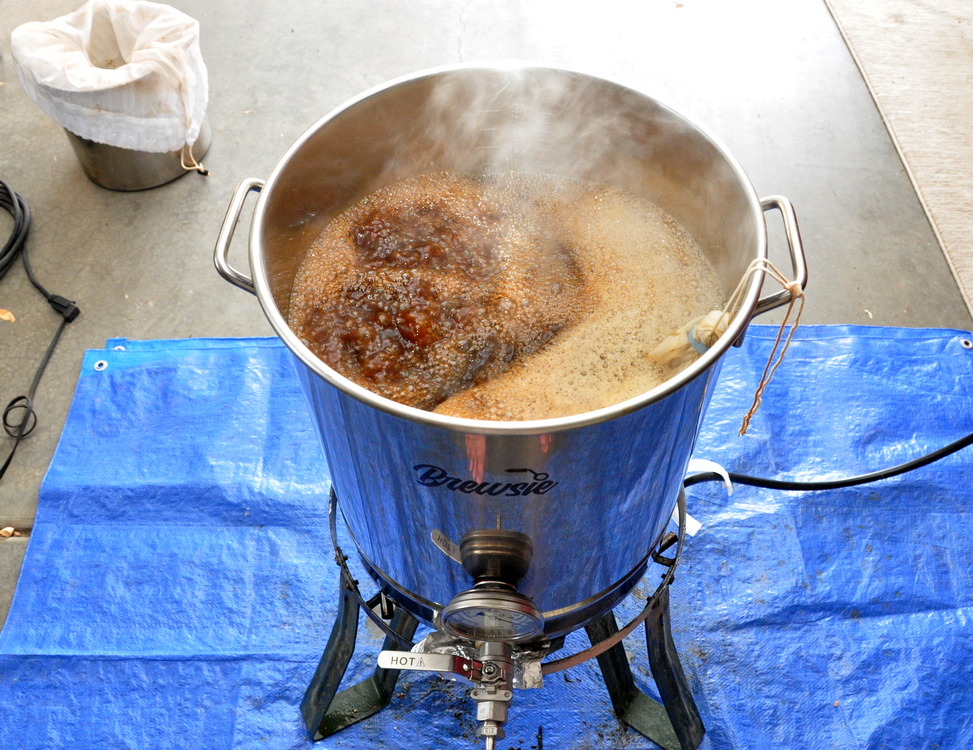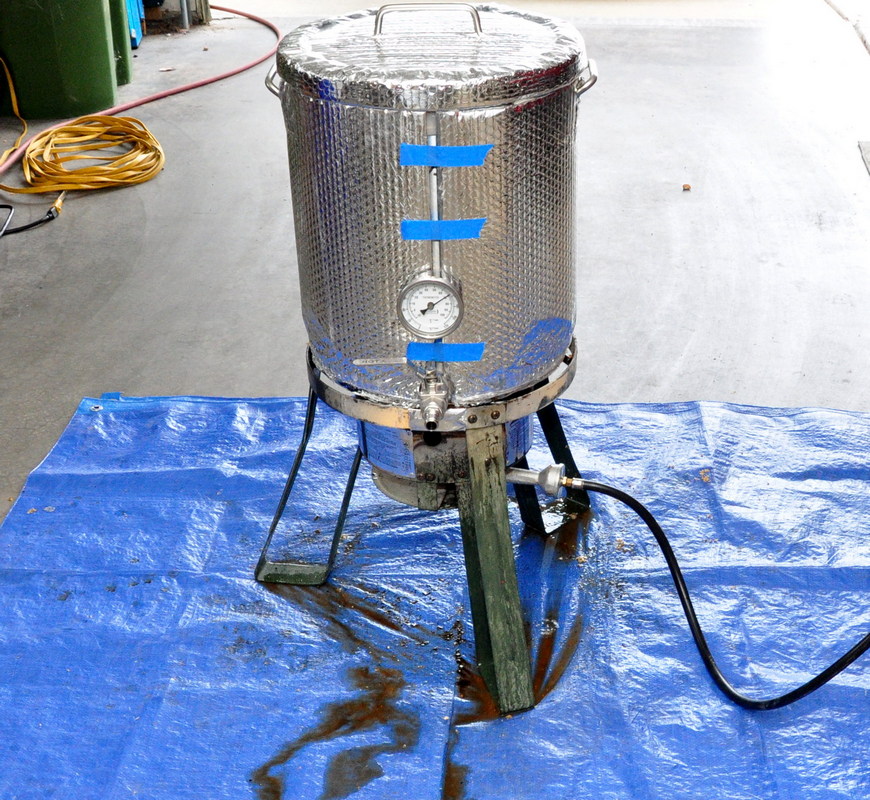Jormunnr
Active Member
Is that your hops in the bag?
You'll know when you have a boil going...View attachment 773834

You'll know when you have a boil going...View attachment 773834
Oh really? I only have a 8 gallon kettle trying on the stove. I was worried the grains wouldn't leave me enough space for water. So, I got a mash tun. Now I'm realizing the possible issue with my temp.Yeah, I do whole grain BIAB brewing.
I mash in a bag, no sparge and during the boil I put my hops in a bag also.
Cleanup is easy.
Trying to do full volume boils on a stove is iffy at best.Oh really? I only have a 8 gallon kettle trying on the stove. I was worried the grains wouldn't leave me enough space for water. So, I got a mash tun. Now I'm realizing the possible issue with my temp.
Oh. Well that sucks.That's what I am trying to get ATM. Concerned with my apartments rules. We aren't supposed to have grills on our patio or decks.




![Craft A Brew - Safale S-04 Dry Yeast - Fermentis - English Ale Dry Yeast - For English and American Ales and Hard Apple Ciders - Ingredients for Home Brewing - Beer Making Supplies - [1 Pack]](https://m.media-amazon.com/images/I/41fVGNh6JfL._SL500_.jpg)







Ah well dang.. yea it's just a basic electric stove. That 210-211 are the highest temps I have seen the kettle get.
No!Think reflective insulation wrapped around my kettle would help me get 5-6gallons boiling on my stove better?

Think reflective insulation wrapped around my kettle would help me get 5-6gallons boiling on my stove better?
DMS has a boiling point of 99° F and doesn't form an azeotrope with water. Even if your wort isn't boiling you're going to be driving off DMS. A cover acts like a condenser but as you said, it's not that the DMS can't escape, it just recondenses and drips back in so it takes a lot longer to drive it off covered..All else being equal, an uncovered bring-to-boil time plus an uncovered X minute boil does get rid of more DMS than a covered bring-to-boil time plus the same uncoverd X minute boil.
But if it causes an issue, one could extend the boil time to compensate. i.e. DMS doesn't become permanently "locked in" by the kettle being temporarily covered. I mention this because I have read concerns that a covered kettle causes DMS to condense and drip back into the kettle. That may be so, but there's nothing stopping the DMS from re-volatilizing and escaping the uncovered kettle later.
I'd think you'd be okay just adding the hops to the largest kettle being boiled. Though some others with more knowledge on that will have to add their 2¢.
Prior to buying a Brewer’s Edge Mash & Boil, I used an 8G kettle with Reflectix wrapped around it on an 1800W induction burner and got a healthy boil going. I live in a 3rd floor condo building and brew in the kitchen because I can’t do so on the balcony. getting 6G to a boil took some time but in the same ballpark as my M&B.That's what I am trying to get ATM. Concerned with my apartments rules. We aren't supposed to have grills on our patio or decks.
A cover will condense some of the steam coming from any degree of boil, and the latent heat of vaporization given up when the steam condenses will heat the lid to somewhere between 200°F and 212°F (lower than 212°, where the heat input to the lid from the condensing steam is lower than the heat lost from the lid to the environment.) DMS, with its low boiling temp, will not condense on a surface that hot and will escape with whatever steam escapes around the unsealed lid (if your lid were sealed, you'd have a pressure cooker.)DMS has a boiling point of 99° F and doesn't form an azeotrope with water. Even if your wort isn't boiling you're going to be driving off DMS. A cover acts like a condenser but as you said, it's not that the DMS can't escape, it just recondenses and drips back in so it takes a lot longer to drive it off covered..
